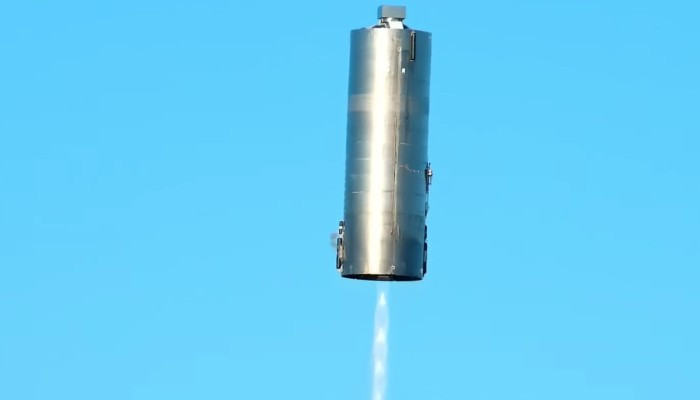SpaceX's Starship SN5 prototype soars on 1st test flight! 'Mars is looking real,' Elon Musk says
 3584 Thursday, 06 August, 2020, 00:00 SpaceX just flew a full-size prototype of its Starship Mars-colonizing spacecraft for the first time ever. The Starship SN5 test vehicle took to the skies for about 40 seconds this afternoon (Aug. 4) at SpaceX's facilities near the South Texas village of Boca Chica, performing a small hop that could end up being a big step toward human exploration of the Red Planet. The stainless-steel SN5 rose into the air at 7:57 p.m. EDT (2357 GMT; 6:57 p.m. local Texas time). It traveled sideways a bit during the brief, uncrewed flight, which Musk had previously said would target a maximum altitude of about 500 feet (150 meters). The spacecraft deployed its landing legs as planned and stuck the landing. Ending this flight lull fell to the SN5 after several of its predecessors were destroyed during pressurization or engine-firing tests. Super Heavy will land back on Earth after each liftoff; Starship will be powerful enough on its own to get itself off Mars and the moon, both of which have much weaker gravitational pulls than our planet does. Musk is particularly keen on the Red Planet, stressing repeatedly over the years that he founded SpaceX back in 2002 primarily to help humanity colonize Mars. If all goes well with the development of Starship and Super Heavy, the spaceflight system could enable our species to get a million-person city up and running on the Red Planet in the next 50 to 100 years, the billionaire entrepreneur has said. |

Japan Unveils Human Washing Machine, Now You Can Get Washed Like Laundry (video)
461601.12.2025, 20:45
Chinese humanoid robot sets Guinness World Record with 106-km inter-city walk (video)
594824.11.2025, 16:30
Musk։ Optimus will be able to eliminate poverty and provide everyone with a universal high income (video)
742523.11.2025, 12:45
AGMI researchers expose the hidden role of female perpetrators in the Armenian Genocide (photo)
379213.11.2025, 21:15
LVM3-M5 mission successfully launches CMS-03 satellite (video)
670602.11.2025, 21:17
Google разработала квантовый алгоритм, работающий в 13 тыс. раз быстрее алгоритма суперкомпьютеров
648722.10.2025, 23:44
Apple introduces the powerful new iPad Pro with the M5 chip
724515.10.2025, 23:34
Apple debuts iPhone 17
734809.09.2025, 23:08
